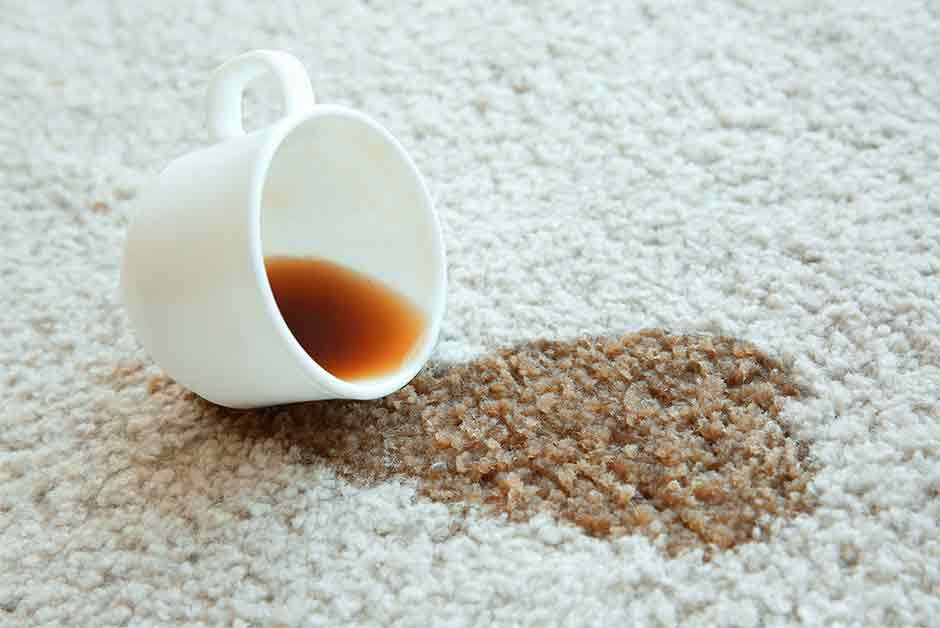To get food color off skin, use vinegar or lemon juice on a cotton ball and gently rub the stained area. Then wash the skin with soap and warm water.
Cooking or baking can be a messy process, and sometimes food color can stain your skin. It can be frustrating to scrub at the skin with soap and water and still see the color lingering. Luckily, there are simple tricks to remove food color stains from skin.
This article will provide an easy to follow guide on how to get food color off of your skin using household items. Say goodbye to stained fingers by following these easy steps.

Credit: www.coit.com
Understanding Food Color Stains
Food color stains, also known as food dye stains, are discolorations caused by food coloring on surfaces, including skin and clothing. Unlike some stains that may easily come out with a simple washing, food color stains can be hard to remove and may require extra effort.
The reason for this is that several factors contribute to the color’s ability to stick to surfaces, making it difficult to get rid of.
Common Culprits Of Food Color Stains
Food color stains can come from a variety of sources, including spices, sauces, fruits, vegetables, and even beverages. Some of the most common culprits of food color stains include turmeric, tomato sauce, beet juice, and mustard. Other sources of food dye stains are candy and chewing gum, which contain artificial coloring that can leave behind stubborn stains on the skin.
Factors That Make Food Color Stains More Stubborn
Several factors can contribute to the persistence of food color stains. First, prolonged exposure to food coloring increases the chances of permanent staining. High-heat cooking methods, such as grilling, also contribute to the coloring’s ability to stick to fabrics and surfaces.
Lastly, different materials and fabrics vary in their resistance to food dyes. Natural fibers such as cotton tend to absorb the color while synthetic materials such as polyester do not, making the color stain stickier and harder to remove.
Food color stains are not only a common problem but can be more challenging to remove than other types of stains. Knowing what causes these stains, the common culprits, and the factors that make them more stubborn can help you take preventative measures to avoid them, making cleaning up a breeze.
Tips To Remove Stubborn Food Color Stains
Food color stains on skin can be frustrating, especially when scrubbing with soap and water doesn’t do the trick. While food color stains are common, removing them can be challenging. In this post, we’ll provide you with tips to help remove stubborn food color stains from various surfaces.
Here are a few effective solutions to try:
Use Hydrogen Peroxide Solution:
Hydrogen peroxide solution can be effective in removing stubborn food color stains from clothes, carpets, and other surfaces. Here’s how to use it safely and efficiently:
- Mix three parts of hydrogen peroxide solution with one part of dish soap.
- Apply the solution directly to the stain and allow it to sit for 15-20 minutes.
- Rinse the area with cold water and dry it with a clean towel.
- Repeat the process until the stain is removed.
Try Baking Soda And Vinegar:
Baking soda and vinegar can work wonders in removing food color stains from pots, pans, and dishes. Follow these steps to use this effective solution:
- Mix equal parts of baking soda and vinegar to create a thick paste.
- Apply the paste to the stain and let it sit for 15-20 minutes.
- Scrub the area with a soft-bristled brush and rinse with cold water.
- Dry the area with a clean towel.
Use Lemons And Salt:
Lemons and salt can also help remove stubborn food color stains from cutting boards, utensils, and countertops. Follow these steps to use this solution:
- Mix equal parts of salt and freshly squeezed lemon juice.
- Apply the mixture to the stain and allow it to sit for 10-15 minutes.
- Scrub the area with a sponge or cloth and rinse with cold water.
- Dry the area with a clean towel.
Explore Commercial Stain Removers:
There are various commercial stain removers available in the market for different types of food color stains. Choose one that is best suited for your needs and follow the instructions on the label. Here are some pros and cons of using commercial stain removers:
Pros:
- They are easy to use.
- They can remove stubborn stains effectively.
- They are widely available.
Cons:
- Some contain harsh chemicals.
- They may not be suitable for all surfaces.
- They can be expensive.
We recommend the following effective commercial stain removers:
- Oxiclean versatile stain remover
- Shout stain remover
- Resolve laundry stain remover
Try Homemade Solutions:
There are also some effective diy solutions that you can try to remove food color stains. Here are some recipes and precautions:
- Dish soap: Mix dish soap with warm water, and apply it directly to the stain. Scrub the area with a soft-bristled brush and rinse with cold water.
- Rubbing alcohol: Apply rubbing alcohol directly to the stain and let it sit for five minutes. Scrub the area with a soft-bristled brush and rinse with cold water.
- Bleach: Mix one tablespoon of bleach with ¼ cup of water and apply it to the stain. Let it sit for five minutes and rinse with cold water. Note: use bleach carefully, and avoid using it on colored fabrics, as it can cause discoloration.
Food color stains can happen to anyone, but removing them is easier with the right solution. Try some of these tips to remove stubborn food color stains from different surfaces.
Precautions And Safety Measures
Handling food color stains can be a messy job and can lead to skin irritation if not taken care of properly. There are some general precautions that one must follow while dealing with these stains and cleaning solutions. Here are a few pointers to keep in mind:
- Always wear gloves while handling food colors and cleaning solutions to avoid skin irritation or any allergic reactions.
- Work in a well-ventilated area to prevent suffocation due to the fumes of the cleaning agents.
- Always use a mild cleaning solution first and proceed to stronger agents if necessary.
- Keep these cleaning solutions away from children, as they can be poisonous.
Using different cleaning agents like hydrogen peroxide, bleach, or vinegar comes with its own set of safety procedures. Let’s take a look at some tips for using cleaning agents safely:
- Hydrogen peroxide should always be handled with care, as it is a strong bleaching agent. Always dilute it with water before use, and wear gloves and goggles to protect your skin and eyes from irritation.
- Bleach can be harsh on the skin and must be used with caution. Always wear gloves while using it and keep the area well-ventilated to avoid inhaling the fumes.
- Vinegar is a mild cleaning solution that is safe to use. However, it should not be used on delicate fabrics or surfaces as it can cause discoloration or damage.
It’s important to note that some cleaning solutions can react differently to particular fabrics, surfaces, or skin types. It’s always best to test a small area before proceeding with the entire cleaning process. Safety measures should always be followed while using cleaning agents to get food color off skin.
Prevention Is Better Than Cure
Prevention Is Better Than Cure: Tips And Tricks To Avoid Getting Food Color Stains
Cooking is a fun activity that allows us to express our creativity in the kitchen. However, accidents can happen, and food coloring stains are one of the most stubborn stains to remove from your skin. They can be frustrating and unpleasant, leaving your hands, clothes, and any other surfaces they touch looking unsightly.
Here are some tips and tricks to help you avoid getting food color stains on your skin.
- Aprons are essential: Wearing an apron while cooking helps protect your skin from food color stains. It is a simple and effective solution.
- Cook in a well-lit area: Good lighting in your kitchen can help you avoid spilling food color on your skin. It makes it much easier for you to see any spills or splatters that might occur.
- Use high-quality utensils: Investing in high-quality utensils, especially those that come with non-slip handles, can be beneficial when working with food colors. Non-slip handles prevent tools from slipping out of your hands, which reduces the chance of spills.
- Be mindful of clothing: Avoid wearing light-colored clothing while cooking with food coloring. Wear something that you won’t mind getting stained, and would be easy to clean.
Immediate Action When Food Color Stains Occur
Even with the best precautions, food coloring stains can still happen, and you must act quickly to remove them.
- Rinse with cold water: Rinse the affected area with cold water immediately. It helps remove any excess dye on the skin before it has a chance to dry.
- Pre-treat the stain: Apply a small amount of dish soap or liquid laundry detergent to the stain and rub the fabric together gently to loosen the stain. Let it sit for a few minutes before washing it in cold water.
- Avoid hot water: Do not use hot water, as this will set the stain, making it much harder to remove.
- Use lemon juice: Lemon juice is a natural bleaching agent and can be applied directly to the stain. Leave it for 10-15 minutes before washing it in cold water.
Remember, prevention is better than cure. Wearing an apron, using high-quality utensils, cooking in a well-lit area, and avoiding light-colored clothing can help you avoid getting food coloring stains. But if accidents do occur, taking immediate action with cold water and pre-treating the stain can help remove it effectively.
Frequently Asked Questions On How To Get Food Color Off Skin
How Can I Prevent Food Color Stains On My Hands?
You can prevent food color stains by wearing gloves while handling food coloring.
Can Coconut Oil Remove Food Color From Skin?
Yes, coconut oil can be used to remove food color stains from skin.
What Household Items Can I Use To Get Rid Of Food Color Staining?
You can use baking soda, vinegar, and lemon juice to remove food color from skin.
How Do I Remove Food Color From Under My Nails?
You can use a small brush or an old toothbrush with soap or baking soda to remove food color from under your nails.
Is It Safe To Use Bleach To Remove Food Color From Skin?
No, bleach is not a safe option for removing food color stains from skin as it can cause irritation and damage.
Conclusion
As unpleasant as it can be, getting food color off your skin is crucial for maintaining a neat and professional appearance. Fortunately, there are a variety of methods that you can try out, from simple soap and water to more specialized cleaning products.
With a bit of patience and perseverance, you can successfully remove even the most stubborn stains. What’s more, taking a few preventative measures will help to keep your skin clean and stain-free in the future. Whether you’re a professional chef, a home cook, or simply a messy eater, knowing how to get food color off your skin is a valuable skill that will serve you well in many situations.
So next time you find yourself with stained hands, don’t panic! With the tips and tricks outlined in this post, you’ll be able to quickly and easily remove any unwanted food color from your skin.







